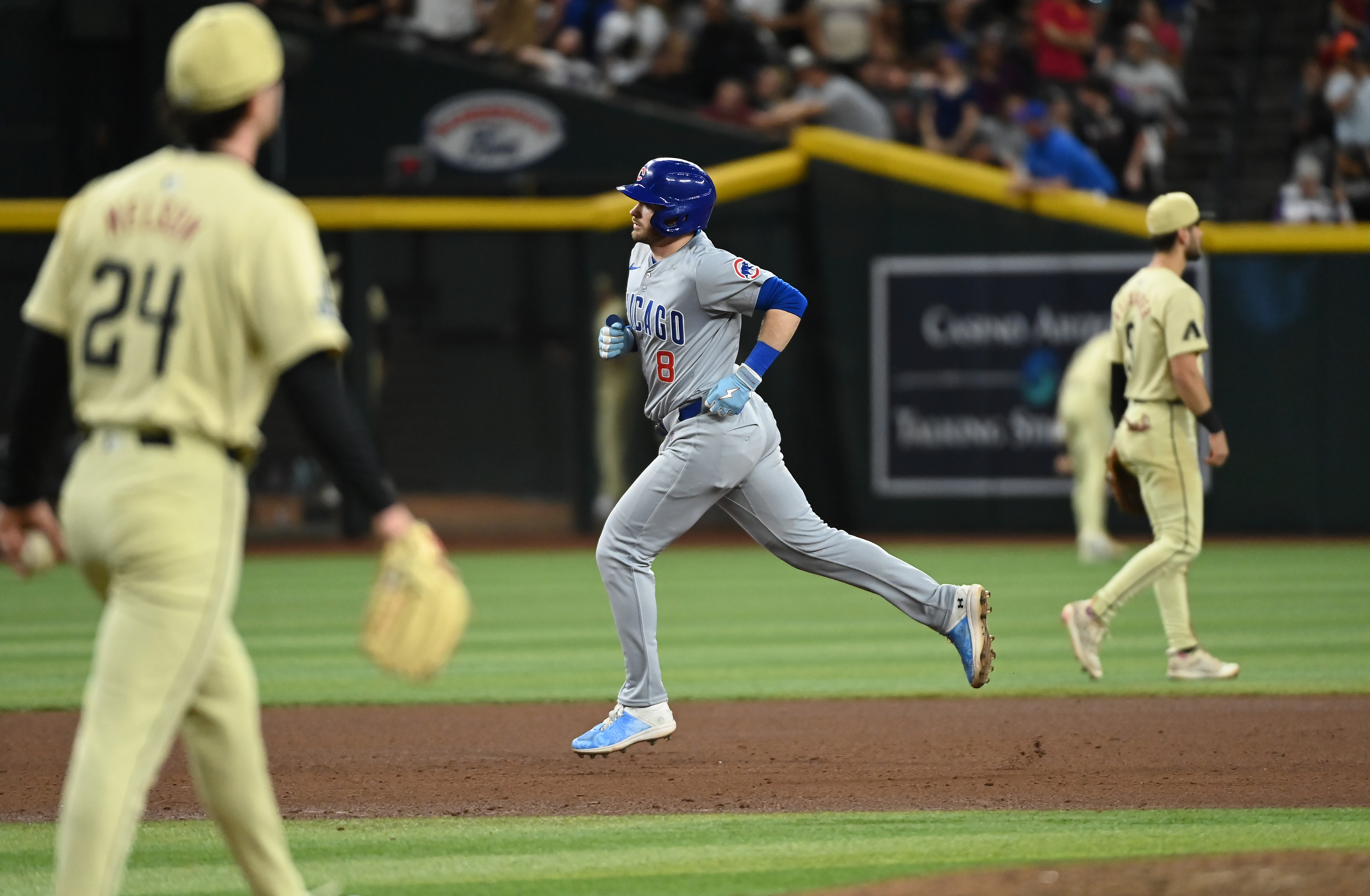Joe Maddon checks the websites for the New York Post and Daily News as part of his morning routine, so the Cubs manager had seen how the city’s tabloids covered the latest incident involving Major League Baseball’s endless fascination with technology and obsession in finding even a 1-percent competitive advantage.
“Mets accuse Dodgers of cheating with lasers,” read one digital headline from the Post, a follow-up angle to Saturday’s Fox Sports report that the Mets contacted MLB about the Dodgers using a laser rangefinder to position their outfielders and requesting to put markers on the Citi Field grass.
The Mets-said, Dodgers-said stories would be overshadowed that night by Noah Syndergaard getting ejected for throwing a 99-mph fastball behind Chase Utley as payback for the takeout slide that knocked Ruben Tejada out of last year’s playoffs.
But instead of becoming paranoid, Maddon will maintain his laissez-faire attitude on Memorial Day when Los Angeles begins a four-game series at Wrigley Field that won’t feature Clayton Kershaw.
“If they’re putting markers on the field, that doesn’t bother me,” Maddon said Sunday. “They can put bull’s-eyes out there. I don’t care. It doesn’t really matter. There’s other ways to do exactly the same thing without that method of technology just by preparation before the game.
“So when you read something like that, to me, it’s a little bit overblown, regarding both its importance and the fact that you should not permit somebody to do it. It really doesn’t matter, because there’s other ways to do exactly the same things without using a laser.”
The Cubs lucked out when the Dodgers lured Andrew Friedman away from Tampa Bay to run baseball operations after the 2014 season, triggering an escape clause in Maddon’s below-market contract with the Rays.
MLB
Depending on your viewpoint, the Dodgers are either a cutting-edge organization flush with intellectual capital, or a cluttered franchise that leads the league in inflated titles and too many cooks in the kitchen.
Beyond Friedman at the president’s level and an ownership group that includes Magic Johnson, there’s a heavy-hitter CEO (Stan Kasten), an MIT-/Cal-Berkeley-educated general manager (Farhan Zaidi) and a cabinet of advisors filled with former GMs (Josh Byrnes, Alex Anthopoulos, Gerry Hunsicker, Ned Colletti).
“Most of the defenses are being set up today more in a generic sense,” Maddon said. “Whatever you think in your group, if you’re the Dodgers or the Cubs or whatever, just go ahead and do it. And if you had to put a mark on the field to indicate that, I have no problem with it.”
Run prevention became a top priority for the small-market Rays, who couldn’t afford big-name, top-of-the-market free-agent hitters. The Cubs and Dodgers are now ranked first and second in the majors in defensive efficiency. FanGraphs ranked those two teams second and third in Defensive Runs Saved.
As much as Maddon listened to Friedman’s Wall Street insights and embraced Big Data, he had already applied some of those concepts in rudimentary ways during his 30-plus years in the Angels organization.
“I used to be in charge of setting up defenses with the Angels,” Maddon said. “I would go out before the first game of a series and I would stand in my spot in the dugout – and I would have somebody go stand at each position – and I would find out where straight-up was.
“I’d stand in that corner – and then you would go stand at third base straight-up, shortstop straight-up. I would put a marker behind you – like a sign on the wall or whatever – that would indicate to me where you’re standing straight-up. So I could move you to the pull (side) three or four steps, or to the soft side three or four steps.”
In the end, Maddon doesn’t care what the Dodgers do with their Department of Lasers.
“They’re going to attempt to utilize all of that,” Maddon said. “I really like the idea of utilizing that stuff just to chart initially, to be able to use GPS (and) try to be really exact where the ball is hit. So then when you compile your information, you’re not getting negative noise.
“We used to do the thing where you had a book in the dugout and you had different colored pencils and somebody would draw a line (to) where the ball is hit.
“(Now) you’re getting actual results. You know this is true. The dot is there. The dot is accurate.”


